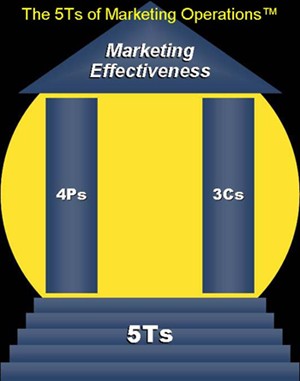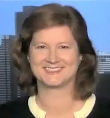CMOs of global companies are now confronted with unparalleled challenges—and opportunities:
Marketing accountability: It is no secret that CEOs are demanding greater ROI on their marketing investments. Consequently, many CMOs are driving initiatives to make the marketing function more accountable and measurable.
Globalization: Serving global markets necessitates that marketing coordinate campaigns across continents to leverage cost and synchronize messaging; however, campaigns must also meet local needs and norms.
Complex consumer expectations: Consumers have become increasingly vigilant about spam and privacy. Compliance with the regulations of each country and state is mandatory.
Mergers and acquisition (M&A) integration: Frequent M&A places constant demands to rapidly integrate messaging, Web, and collateral of newly acquired companies into the corporate brand. Inadequate marketing budgets frequently associated with acquisitions place additional stress on existing budget priorities.
New marketing technology: The advent of new internet technology has enabled unprecedented interactive dialog with customers. This presents a huge opportunity for forward-thinking companies to target and reach customers in personalized ways. However, new technologies must be implemented and integrated across the world with regional marketing teams that execute campaigns locally.
Stakeholder agreement: Coordination with regional marketing groups, product business units, and sales is a major task. Processes are needed to prioritize and support new product introductions and demand generation within marketing budget constraints. Terms such as "What constitutes a qualified lead?" need to be standardized worldwide. Otherwise, roll-up, visibility, and accountability via actionable CMO and campaign dashboards become nearly impossible.
Marketing Operations Emerges as a Discipline
Faced by these demands, many CMOs have commissioned a marketing operations organization to tackle these challenges. Originally designated to create metrics and dashboards for accountability, marketing operations is increasingly being treated by leading companies as a foundation to the marketing function.1
Marketing operations is the only function (other than the busy CMO) that manages marketing from an end-to-end perspective. Marketing functions such as PR, product marketing and regional marketing only see a portion of the big picture.
"Marketing operations ensures marketing is run as a business," states a VP of Marketing Operations at a major Silicon Valley firm, "We strive to enable the marketing organization to be streamlined in day-to-day processes so they have time to think, focus on the customer and to innovate."2
The 5Ts of Marketing Operations
What constitutes marketing operations? Based on our work with clients, and in our research, we have found that marketing operations is an emerging dimension to the marketing mix. Enabled by new processes and technology, it goes beyond the 4Ps (Product, Price, Place, Promotion), and 3Cs (Customers, Competitors, Corporation3), to fully round out the marketing mix.
The 5Ts of Marketing Operations:
- Total Strategy
- Techniques & Processes
- Tracking & Predictive Modeling
- Technology
- Talent

By approaching marketing operations across these dimensions, CMOs have an integrated approach to enable marketing worldwide.
Let's describe the 5Ts in more detail.
Total Strategy
This area involves strategy development in the product portfolio. It is not uncommon for large companies to have dozens of products in their portfolios—some have hundreds. Managing investments and priorities across the portfolio is paramount.
- What constitutes effective strategy development for each product?
- What are the key elements needed in each plan to win in the marketplace and to roll this out worldwide?
- Where do we "double-down" our investment? How do we gain market share with our resources? Where do we reduce investment?
- Does the organization reflect how our business should optimally interact with customers? Are there new ways we can improve our dialog and reach?
Chief of staff for the CMO: Based on our work with clients and research, the head of marketing operations in a number of companies takes on this role—driving the organizational agenda, identifying "white spaces," and ensuring measurement results are discussed at review meetings.
Techniques and Processes
How should information flow most effectively across the marketing organization worldwide? How do we make decisions? What are our governance processes? What is our roadmap for marketing processes next year? in three years?
- Fiscal planning processes and reviews
- How should budgets be allocated?
- How should we optimally interact with our customers? What are the touch points?
- How should information flow within marketing and with other stakeholders such as sales and business units?
- Standards and criteria for evaluating new initiatives and campaigns.
- What are product launch categories (e.g., criteria for "A," "B," or "C" launches)
- Can we apply Six-Sigma to our processes?
Tracking and Predictive Modeling
How do we make marketing more accountable? How do we measure campaigns and ensure better predictability of outcomes?
- How are we doing today? Metrics and dashboards.
- Forecasting—What are leading indicators of the future? How can we better target and predict? e.g., data-mining customer databases.
Technology
How do we implement technology across the globe to enable effective customer dialog, demand generation and measurement? What are the business requirements for IT? How does technology support the marketing and sales process road map for the next three years? How do we integrate with sales technology?
- Internet/Web/e-commerce
- Consolidating/rationalizing customer databases
- Online customer forums
- Marketing resource management software Analytics/decision-making software
- Marketing research databases, etc.
Talent
How do we ensure our marketing personnel are trained and able to work with new marketing technologies and processes? How can we enable them to make the right decisions based on analytics and campaign scorecards?
- What are the roles and responsibilities of each talent community?
- How do these communities interact? Where are the hand-offs?
- Training strategy with a marketing skills curriculum across the marketing function
- Ensuring balancing between the art and science of marketing
The 5Ts Transform the Future of Marketing
Although foundational, the 5Ts have a deep and significant impact on customer relationships. For example, by implementing integrated technology for demand generation and customer database access, regional marketing personnel can build innovative campaigns on top of a marketing operations infrastructure. By tracking the success of a campaign, companies will realize better customer targeting and ROI; they learn from prior successes and failures.
Although it can be a multiyear process for large organizations to implement all of the 5Ts, a holistic, integrated approach to marketing operations gains CMOs greater accountability and ROI for their organizations worldwide. It enables them to "run marketing as a business."
The 5Ts add a critical foundation to the marketing function, enabling marketing operations to support CMOs in tackling contemporary challenges and opportunities. The 5Ts are dramatically transforming the marketing function and changing how marketing will be conducted in the future.
Endnotes:
1 In a number of business-to-business-focused firms, marketing operations is combined with the sales operation function to promote integration of the two groups. Although organizationally integrated, the purpose of marketing operations remains the same.
2 HBS N. CA Marketing & Sales Roundtable, "Marketing Operations: How It Will Transform Marketing Forever," Panel Discussion with VPs of Marketing Operations from Symantec, Cisco, BEA, and a consumer packaged goods expert, June 20, 2006.
3 The 3Cs have been used in other forms and described in different ways. For example, we have heard "Communication" used as a "C." Our description is what appears to be most consistent in the literature. Other forms could be substituted for the 3Cs and have the same effect. The intent here is to avoid debate on this element, as it would diminish the central topic.




